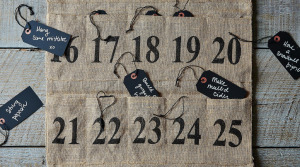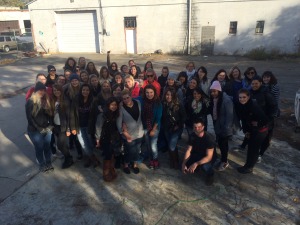With stories about infectious diseases like the flu, Ebola, and Enterovirus D68 in conversations and on the news, your children may be worried about becoming sick. Here are some tips about how to talk about these illnesses:
Be informed:
Get accurate information about the illness from reliable sources, including:
US Centers for Disease Control and Prevention (cdc.gov)
World Health Organization (who.int)
Arlington County Public Health Division (http://health.arlingtonva.us/public-health/)
Ensure that you are ready to answer children’s questions. Print information to readily answer questions.
Consider your child’s age, maturity level, and coping style:
Generally, younger children need more reassurance and want to be told that they are safe. Older children are more ready for information and may ask questions.
Like adults, children handle information differently: some children need more information to deal with issues, while others worry more if they have a lot of information.
Adjust the information you share to your child’s personality and needs, using words they understand.
Use these guidelines to help have a conversation (or two) about the topic:
Ask your children what they have already heard and understand about the disease. Ask them what other information they would like, correct any misinformation.
Be factual and honest. Help children understand the differences between common illnesses, like colds, that they may catch and the rare diseases that may be talked about in the news.
If you are unsure of an answer, explain to your child that you don’t know. If it is still of interest, offer to look up the answer for them, or, if they are old enough and interested, help them look it up themselves.
Use the conversation as a chance to teach caring for others who may be having a hard time. You might also use this as an opportunity to talk about bullying and ways to prevent it.
Use our conversation starters to help you initiate a conversation with your child:
Consider simply asking your children about the illness or disease you want to discuss. Use what your children tell you to clear up misunderstandings and answer any questions they have. Possible questions include:
“Can you tell me what you’ve heard about _______?”
“Has ______ been mentioned at school?”
“You’ve probably noticed that ________has been mentioned a lot lately. Do you want to talk about it?”
Use books, movies, or television to help start a conversation:
Read a book with your child where a character becomes ill, like “Katie Woo Has the Flu”, “Germs Are Not for Sharing”, or “A Germ’s Journey” to help start a conversation about illness.
Bring up the topic if a news show or movie mentions an illness when your children are in the room. You could even plan a movie night a way to initiate a discussion. For example, watch PBS’s “Frontline: Ebola Outbreak” with your older teenager and discuss infectious diseases afterwards.
Use websites like http://www.childrennow.org/index.php/learn/talking_with_kids/ and http://kidshealth.org/parent to help you plan more conversation starters.
Remain calm and confident:
Your children notice your attitude. If you act nervous or fearful, your children will copy this behavior. Don’t just tell children they “shouldn’t worry.” Rather, support them as they learn to overcome their fears.
Rehearse the conversation with a friend or spouse to help you remain calm and focused when you talk to your children.
Remind your children they can take simple steps to protect themselves from both common and rare diseases:
Wash hands with soap and warm water (scrub for 20 seconds) to get germs off hands. Do this several times every day. Use hand sanitizer if soap and water are not available.
Cover coughs and sneezes with elbows or a tissue to prevent spreading germs to others.
Stay home from school and activities when sick to prevent spreading germs to others, and to recover more quickly.
Source:ArlingtonVa.us







